Nina Notman talks to the experts about what is needed to remove pollutants and even infectious diseases from the air inside our homes, schools and offices
‘The very first canon of nursing, the first and last thing upon which a nurse’s attention must be fixed… is this: to keep the air that he breathes as pure as the external air, without chilling him. Yet what is so little attended to? Even when it is thought about at all, the most extraordinary misconceptions reign about it.’
These are Florence Nightingale’s opening words in the first chapter of her 1859 book Notes on Nursing, and she goes on to bemoan the reluctance to open windows and doors, both in hospitals and at home, for half a dozen more pages. Would she be surprised to learn that, over 160 years later, this same aversion persists?
Today, the indoor air revolution remains long overdue. Poor drinking water quality, at least in the global north, was dealt with during the mid-19th century after cholera outbreaks in London were linked to contaminated water. The great smog of London in 1952, which claimed an estimated 8000 lives over five days, led to the UK’s Clean Air Act of 1956 and other (ongoing) global efforts to clean up the outdoor air.
The Covid-19 pandemic has given poor indoor air quality its first significant moment in the spotlight. What changes are needed to address this invisible menace to human health, and will the pandemic be the trigger that finally sees it addressed? Chemistry World talks to an interdisciplinary group of experts to hear their views.
The need explained
Clean indoor air is vital for a number of reasons. Firstly, it is where we do most of our breathing – people in the global north spend, on average, 90% of their time inside buildings or vehicles.
Disease transmission is another reason, with airborne viruses spreading much better indoors than out. Robust evidence shows that many respiratory viruses, including those responsible for Covid-19, flu and the common cold, are airborne. Viruses are present in the saliva and fluids lining the respiratory tract of infected people. ‘When we talk, when we sneeze, when we cough, even just when we breathe, little bits of saliva and respiratory fluid leave our bodies and there is a chance the virus may be in these [tiny fluid particles],’ explains Jose-Luis Jimenez, an aerosol and indoor air chemist at University of Colorado Boulder, US.
These virus-laden particles stay suspended in the air – and therefore are often called aerosols – for some time. Cigarette smoke is an imperfect but useful analogy. When others breathe these particles in, they too can become infected with the virus. ‘The more virions that one inhales the higher the probability of infections – and so there is a compelling case to be made for lowering inhalation dose,’ explains Richard Corsi, an indoor air engineer at University of California Davis in the US. Transmission occurs much less frequently outdoors because the wind tends to rapidly blow away the infectious particles. A June 2022 report commissioned by the Royal Academy of Engineering found the annual societal costs of seasonal respiratory diseases in the UK is £8 billion per year, rising to £23 billion in a pandemic year.
Student absences increase with increases in carbon dioxide levels in classrooms
The public health – and therefore economic – consequences of poor indoor air quality go beyond virus transmission. The indoor air is filled with a soup of potentially harmful gases and particles, some of which float in from the outside, but many of which originate inside. Contaminant concentrations in indoor air are typically much higher than those in outdoor air, and indoor air pollution has increasingly been linked with cancer, cardiovascular disease and respiratory disease. ‘The amount of air pollution that we breathe during our lifetimes is [therefore] dominated by the air that we breathe indoors,’ says Corsi.
Building materials, furniture and soft furnishings release harmful volatile organic compounds such as formaldehyde into the air. So do cleaning and personal care products, air fresheners and scented candles. Cooking and fires, especially wood burning stoves, pump out particles into the room. Additionally, humans contribute to indoor air composition by breathing out a plume of carbon dioxide and reactive trace gases.
Poor indoor air quality also negatively affects cognitive performance, especially in crowded environments. Anyone who has had trouble staying awake in a packed lecture theatre won’t be surprised by this. According to a 2020 review by Marcel Loomans, an indoor environment engineer at Eindhoven University of Technology in the Netherlands, student cognitive performance falls by up to 13% when carbon dioxide concentrations rise from 600 to 1000ppm, and by 24% at 1800ppm. ‘Past studies also indicate that student absences increase with similar increases in carbon dioxide levels in classrooms,’ adds Corsi.
Removal at the source
Eliminating the sources of indoor air pollutants is the highest priority when looking to improve indoor air quality. A quote attributed to 19th century Bavarian chemist and hygienist Max Joseph von Pettenkofer sums this up: ‘If there is a pile of manure in a space, do not try to remove the odour by ventilation. Remove the pile of manure.’
There are an enormous amount of unnecessary chemicals that we put into the air
This isn’t as simple as it should be. For airborne viruses, this means people isolating when are sick – a challenge on any meaningful scale for a myriad of reasons. For indoor air pollution, this means removing unnecessary sources of pollutants – another challenging issue that will only be resolved by changes in, and better regulation of, consumer product formulations. ‘There are an enormous amount of unnecessary chemicals that we put into the air and this is driven by industry,’ explains Cath Noakes, an engineer focused on ventilation and infection control at University of Leeds, UK. ‘If there’s a problem with your indoor air, what does industry do? It sells you something smelly to combat it!’
Behaviour changes, especially at home, can reduce exposure to indoor-derived pollutants until regulations catch up, as well as drive market changes. Public awareness is on the increase, according to Nic Carslaw, an indoor air chemistry modeller at the University of York, UK. Several product manufacturers are now working with her group to reduce air pollution caused by their products, including candles and air fresheners. ‘If they do this quickly, they’ll have the market lead and be able to say that we are manufacturing safer products unlike our competitors. It’s in their interests to think about doing this,’ Carslaw says.
Letting the outdoors in
Ventilation – replacing indoor air with outside air – is the next most effective way to improve indoor air quality. This can be as easy as opening a window. The second year of the Covid-19 pandemic saw the UK and other countries with low levels of mechanical ventilation advising public venues such as schools, hospitals and other healthcare settings to open windows. It was also recommended that people open windows at home when visitors came.
In December 2020, Stephanie Dancer, a microbiologist in NHS Lanarkshire and at Edinburgh Napier University, UK, spearheaded one of the UK’s earliest hospital open window policies. ‘If you work in the NHS you know that trying to change policy is like punching through a 30 foot concrete wall,’ she explains. But for this policy, it took just three weeks to agree that all the windows in clinical areas should be opened for 15 minutes, three times a day, as well as the windows in the canteen and corridors. ‘The mortality rates for Covid-19 across our three hospitals dropped like a stone as soon as we got the windows open,’ says Dancer. This was possible in a semirural health board but in areas with high outdoor pollutants, opening windows can further reduce indoor air quality. Other concerns include safety and noise from traffic and other sources.
The hands-off approach
In some environments it is often better to use mechanical ventilation systems, which constantly bring outside air into buildings through fans and ducts. ‘If you’re worried about outdoor air pollution and you have a mechanical system, you can treat the air as it comes in using filtration technology,’ explains Corsi.
Mechanical ventilation has been linked to better health outcomes for decades, and data is beginning to emerge proving it is effective in reducing Covid-19 transmission. A study from September 2021 to January 2022 of over 10,000 classrooms in the Marche region of Italy found dramatically fewer Covid-19 cases in the 316 classrooms with mechanical ventilation. By replacing the indoor air with outdoor air 2.4 times an hour, infections dropped by 40%; four times an hour, by 66.8%; and six times an hour, by 82.5%.
Every time we’ve had an energy crisis, the ventilation rates in buildings have dropped
Operating theatres and isolation rooms are required by UK law be ventilated at certain rates and to have their air handling systems inspected regularly. For most other indoor environments, ventilation requirements are just guidelines. ‘The building regulations require that all occupied spaces are ventilated and there are various health and safety for workplaces regulations which require that buildings are ventilated,’ says Noakes. ‘There’s very little in the way of checking compliance with those guidance values. And so that what that means in practice is that there are a lot of buildings out there that have really quite inadequate ventilation.’
‘We have many buildings which are not complying with regulations in the Netherlands,’ says Loomans. Buildings should be made to meet ventilation regulations that were in place at the time of their construction, he adds, or better still they should be retrofitted in order to adhere to the latest insights on adequate ventilation. ‘Ventilation has been neglected and [rates were] getting lower before the pandemic, because energy efficiency and climate change was the priority,’ adds Jimenez.
‘We can’t just keep making the mistakes of the past,’ agrees Noakes. ‘Every time we’ve had an energy crisis throughout history, the ventilation rates in buildings have dropped… compromising the health of the population.’ Noakes says ventilation should be included in the UK’s Net Zero Strategy: Build Back Greener. Meanwhile, Loomans suggests that there should be financial support for the installation of ventilation systems such as those used for energy saving technologies. Neither engineer advocates mechanical ventilation for every building. ‘We need to think smartly about how we use combinations of technologies in the right way,’ says Noakes. Both also agrees that ventilation and energy efficiency need not be mutually exclusive. ‘If you’re designing a home which has got a good level of air tightness with a mechanical ventilation system with heat recovery, that is probably more energy efficient than a home which is naturally ventilated,’ Noakes says.
Filtering the air
Portable air cleaners were becoming increasingly popular for home use even before the Covid-19 pandemic, especially during the allergy and wildfire seasons in the US. Many of those on the market are ineffective, however, because this marketplace is an unregulated wild west. According to Corsi, the only particle removing devices on the market rigorously proven to be effective are those with high efficiency particulate air (HEPA) air filters and high air flow rates. ‘The other stuff that’s out there is either unproven or proven to be not nearly as effective,’ he adds.
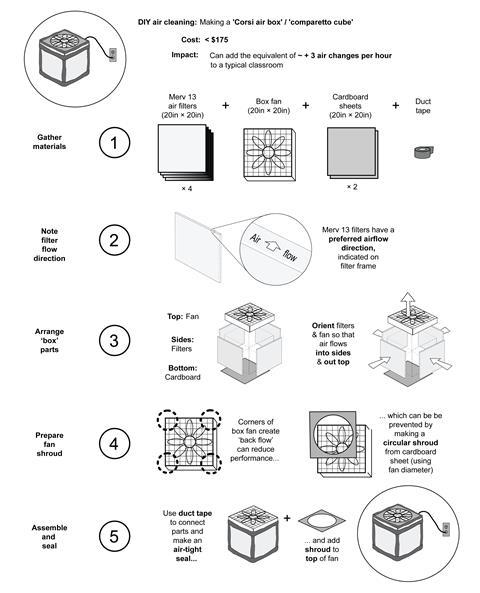
As soon as Covid-19 was identified as an airborne virus, it should have been obvious that air filtration would reduce transmission in crowded and poorly ventilated shared indoor spaces. Uptake in these environments has been lacklustre, however. Cost is one reason: the UK consumer magazine Which? found that an effective device costs at least £200; while the UK Department of Education recommendsonly two devices for use in education facilities, one costs £425 and the other £1219.
Corsi came up with an alternative in August 2020: a DIY box fan air filter built from inexpensive parts found in US hardware stores. ‘It just dawned on me that in the United States a large swath of the population simply can’t afford a $300 [£245] device in their home and also a lot of school districts are financially constrained in rural areas,’ he explains. He calculated the air flow rates of several designs on paper before choosing a cube design with a square fan on top and filters sold for furnaces (a common US heating system) as the sides and base.
In the US, parts cost around $90 if bought individually, and $55 if purchased in bulk. The first prototype was built by Jim Rosenthal, from the Fort Worth-based air filter manufacturer Tex-Air Filters. Hundreds of photos of built so-called Corsi–Rosenthal boxes have been tweeted since then – with some people constructing hundreds at a time and distributing them to local schools and other public buildings. ‘My guess is it might be more than 10,000 [boxes built] now. But that’s just a really wild guess,’ says Corsi. The concept has also spread internationally, including to a few Welsh schools with the design was adapted for local materials.
Sterilisation
Noakes is currently partnering in a project in around 30 Bradford schools to assess the use of commercial portable HEPA air filtration as a blanket intervention to reduce transmission of respiratory infections, including Covid-19. ‘It’s been recommended already to use them in poorly ventilated spaces and we’re [now] putting them in regardless of the ventilation [rates] of the classrooms,’ she says. The same study is also evaluating ultraviolet (UV) sterilisation devices that zap air as it passes through enclosed boxes.
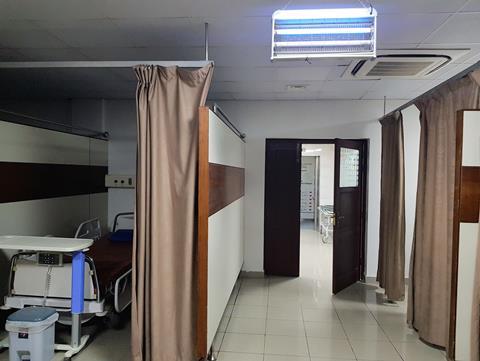
UV has been used to reduce transmission of airborne viruses and bacteria since the 1930s. Typical devices are not the enclosed boxes being trialled in Bradford but rather those that beam UV light out across a room at ceiling height. These upper room UV devices have been shown to kill half of the airborne viruses present in the air every two minutes or less. ‘Upper room UV is brilliant because it provides a really high additional air change rate equivalent,’ says Noakes.
Donald Milton, an environmental health expert at the University of Maryland, US, says that upper room UV has the potential to reduce superspreader events. Before the pandemic, this was mostly only used in tuberculosis hospitals, in some emergency room waiting rooms, and in some homeless shelters. There is anecdotal evidence that its use has increased during the pandemic, says Milton. Most of these devices require expert installation due to using UVC wavelengths that can burn skin and cause eye injuries if installed badly. Noakes and her colleagues are currently testing far-UVC devices, which use a narrow band of the UVC spectrum that inactivates bugs but cannot penetrate skin or eyes. ‘Without those safety concerns, it’s a much easier system to put in,’ she says. It is hoped that easier installation will expedite the large-scale use of UV sterilisation for shared indoor air.
Monitoring the indoor air
Indoor air quality cannot be quantified without the assistance of experts and their high-tech instruments. But portable carbon dioxide monitors can give a good indication as to how ventilated a room is, and their use has increased significantly during this pandemic. ‘Unless you have open flame indoors, the carbon dioxide indoors is largely coming from people meaning [it can be used] as a tracer gas for how much exhale breath there is,’ explains Milton. The exact level of carbon dioxide that reflects poor ventilation depends on the size of the room and how many people are in it, but the level in outdoor ‘fresh air’ is around 420ppm, making that a good point to aim for. But while carbon dioxide monitors can be cheap (starting at around £30) and extremely useful, they do not provide an accurate reflection of indoor air quality when air filtration is in place, since the gas is not captured in the filters.
Some countries including the UK have supplied carbon dioxide monitors for school classrooms. According to Loomans, building managers are using these monitors in schools and elsewhere to know when they need to improve ventilation and to determine safe room occupancy levels. Monitors in public places also allow people to take action themselves. The Belgian government announced in April 2022 that all public indoor spaces must install visible carbon dioxide monitors by a provisional date in mid-2023. By 2025, a certified indoor air quality label will also be required in Belgium that will take into account ventilation, air purification and occupancy rates.
We don’t make people aware enough of the quality what they’re breathing
Members of the UK Independent Scientific Advisory Group for Emergencies, including Elizabeth Stokoe (an expert in social interactions at Loughborough University), Robert West (a behaviour scientist at University College London) and Adam Squires (an aerosol chemist at University of Bath), are laying the groundwork for a similar label scheme in the UK. Pilots of their Scores on the Doors project have focused so far on how best to display this information. ‘The messaging needs to be non-technical and practical enough to act on quickly,’ says Stokoe. Energy efficiency ratings for white goods and traffic light systems on foods are serving as inspiration. Unlike in Belgium, this scheme is intended to be non-mandatory.
Displaying carbon dioxide monitors or indoor air quality signs will have the most impact on people who are already aware of the public health impacts of poor indoor air quality at first. The more they are used, according to Stokoe, the more people will become aware of the issue, just as food hygiene certificates have raised public awareness about unclean restaurants.
Other efforts to boost public awareness of indoor air quality are also badly needed, says Noakes. ‘We don’t make people aware enough of the quality of their indoor air and what they’re breathing,’ she adds. ‘We need to build that knowledge for people about what’s in [their indoor air], how it is affected by the building, how it’s affected by the outdoor conditions, how it’s affected by what they do and the products they use.’ Noakes and Carslaw both suggest that indoor air pollution should be taught in schools.
Is change in the air?
Covid-19 has raised indoor air quality awareness to an all time high. While the majority of relevant experts (include all those interviewed by Chemistry World) see improvement in indoor air quality as a long-term goal, how realistic is this prospect? Answers to this question from the experts are mixed. ‘We are coming to a time where people are over it and just want to forget,’ worries Milton. ‘When something [bad] is over, human beings tend to move on to new things and then forget about the past,’ adds Loomans. Further Covid-19 waves will, of course, prolong public and decision maker attention.
We need to be activists in this subject for 20 years
Jimenez is more positive, believing that the pandemic will prove to be an ‘inflexion point’ for indoor air quality – but not without effort from him and the other scientists who have been vocal throughout the pandemic. ‘We need to be activists in this subject for 20 years, and it’s going to be a slow and patchy progress… like with outdoor air pollution where have made a lot of progress the problems are still huge and there’s still decades of work [needed],’ says Jimenez.
Stokoe and West are also both upbeat about the likelihood of long term improvements, and agree with Jimenez about the expected speed of progress. ‘I’m optimistic,’ says Stokoe. ‘It’ll be like sunscreen [though], and how we have slowly gone from wanting to slap on the coconut oil to slapping on [sunscreen].’ West uses the slow turning tide of public opinion against smoking as his analogy: ‘With smoking, we started to get little islands of good practice and then those grew and they coalesced and eventually we ended up islands of bad practice within continents of good practice.’
Improving indoor air quality wholesale isn’t a task that any one discipline expects to solve alone. ‘What I learned [during the pandemic] is that the only way forward is to work together with all the disciplines that are involved, the aerologists, the epidemiologists, engineers and the medical people,’ says Loomans.
‘What that means is that in order to change things, we need interdisciplinary funding, interdisciplinary teams, and we need organizations working together to solve it,’ says Noakes.
Nina Notman is a science writer based in Salisbury, UK
Article updated on 26 September 2022 to correct the value for the level of carbon dioxide in ‘fresh air’
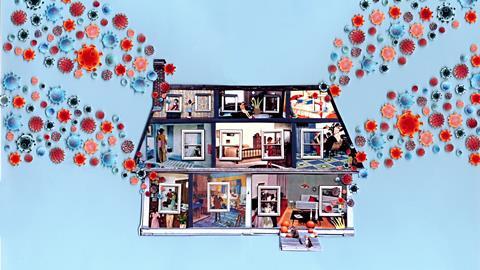


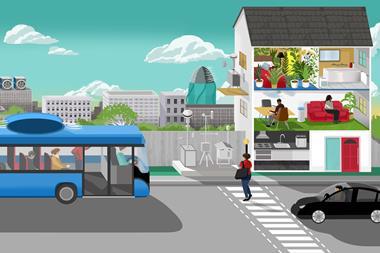
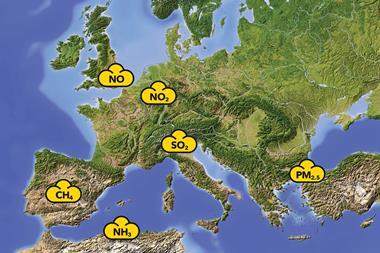








5 readers' comments